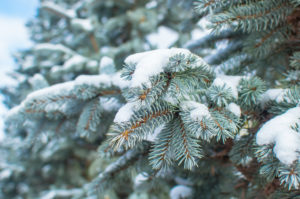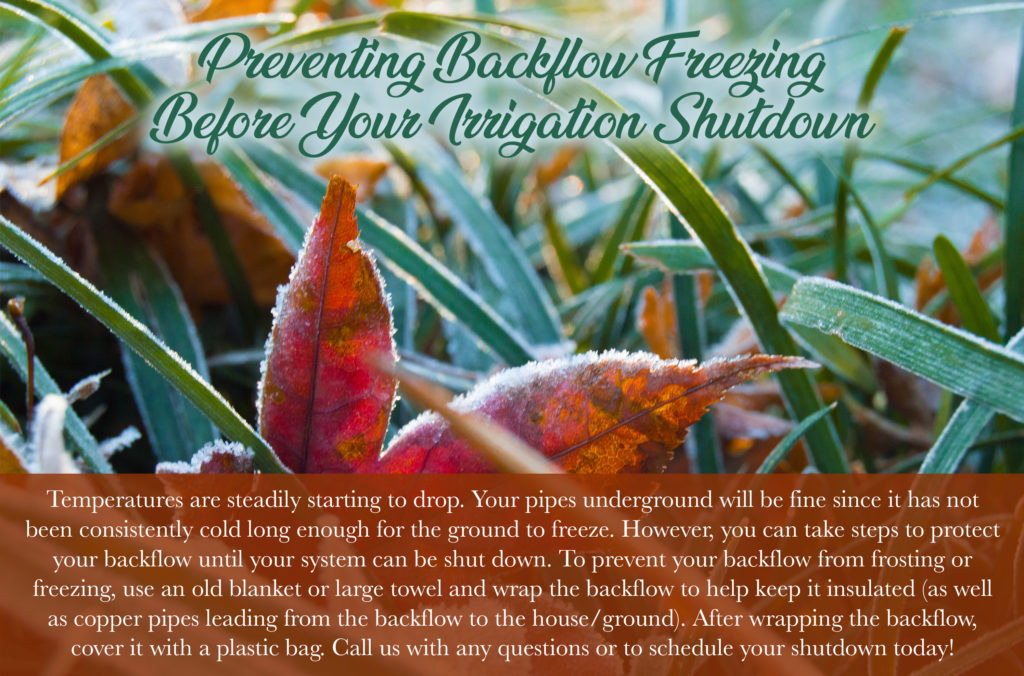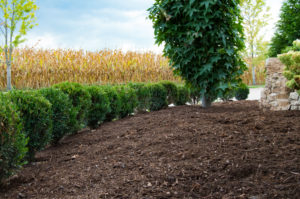Updated December 2, 2020 | Originally Published December 1, 2017
Watering does not end when winter begins! It can actually make sure your plants emerge better in the spring and prevent winter burn. Your houseplant watering and environment changes because of winter!
Soil Conditions
All plants benefit greatly going into winter with adequately moist soil. As deciduous trees and shrubs go dormant once they defoliate, they will not be actively looking to absorb water as quickly as they would when their leaves are on. However, watering still provides extra insulation for the plant roots and helps to prevent freezing. Getting a full-scale fall clean up or just a mulch touch up in the fall will help with this insulation. Check out this excerpt from our Fall Perennial Planting & Transplanting Blog about mulching:
Leaving just soil around your plants increases the risk of a drier climate for your plants. This is ok for drought-resistant plants. However, usually a lot of plants need more moisture in the soil. Mulch helps retain the soil’s moistures below as well as providing another layer of protection to the plant’s root system. MU’s Research Extension says that mulch “helps to prevent alternate freezing and thawing of the soil during late fall and early spring”.
Evergreens
Evergreens such as spruces, pines, and boxwoods will still want to be watered because they still have active tissue in their needles and broadleaves. As winter winds pick up, the watering helps to defend against desiccation. Winter watering can be done on mild days when temps are in the 40s. Similarly to summer watering, it is best to keep the water off the foliage of the plant. In the summer, wet foliage in the heat of the day can lead to burning or crisping of the leaves. For winter, getting water on the foliage, not just in the middle off the day but more so early on or later in the day, will increase the chance of the foliage getting frost damage.
During these days, we recommend a good soaking of the plants. Our standard watering schedule outside of winter is every 4th day for 15 minutes. For winter, a 20-25 minute soak once a week during times when the temperature does not drop below 40 degrees. Dennis Patton of Kansas State University’s Research Extension notes that “plants do not lose their moisture rapidly in the winter compared to the summer. A deep soaking should last for a month or more depending on the moisture patterns.”

Home Maintenance with Winter Watering
Make sure you remember to disconnect your hose from your outside water spigot to prevent any freezing. Another maintenance item to note is your sprinkler system. Hopefully by now, your system has been blown out and shutdown. For earlier in the season when it is on the border of needing to be shutdown and there is a drop in temperatures in the forecast, here is a helpful tip from our Irrigation Department!

Houseplant Winter Watering
Surprisingly, houseplant’s watering routine will need to be adjusted in the winter as well! Just like your outdoor plants, they do not need the same amount of water during these cold months as they do in the spring, summer, and fall. Home and gardening publication, The Spruce, talks about how since “winter air is drier, plants experience a slower rate of growth during cold weather.”
Climate & Houseplants
Houseplants prefer for humidity levels to hover around 50%. Because of winter’s drier air, humidity levels will obviously drop. Temperature drops outside can effect the environment of certain areas in your home that can negatively effect your plants. Sun exposure also changes! To help your houseplants combat there climate changes, there are a number of things you can do such as:
- Cluster your houseplants together to create a microclimate as their foliage gives off water.
- Use a humidifier and/or group your plants in the vicinity of the humidifier
- Move to a room with high humidity such as the kitchen or a bathroom with a tub or shower.
- Please your plant in a pebble tray or cache pots that does not allow the plant’s roots to sit in standing water.
- Misting (only provides lower levels of temporary humidity, use caution in misting succulents as it can cause fungal issues.)
- Keep your houseplants in ideal temperatures. Lowest they can tolerate is 50 degrees.
- Move plants away from the fireplace as this can dry them out
- Move houseplants off of windowsills as they give off cold drafts in the winter.
- Relocate houseplants that require brighter areas as the sun is out for fewer hours during the winter and light comes in at a lower angle.
- Hold off on fertilizing, re-potting, and taking cutting until Spring as this can interrupt their natural cycle.

Stay tuned for our houseplants blog coming soon to learn more about caring for your house plants and what kind may be best for your home or office!
For more care tips, check out Missouri Botanical Garden’s Gardening By Month page!


